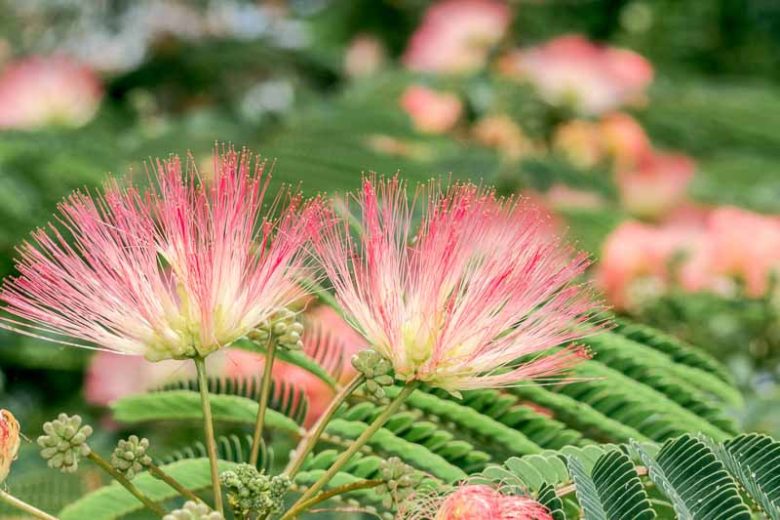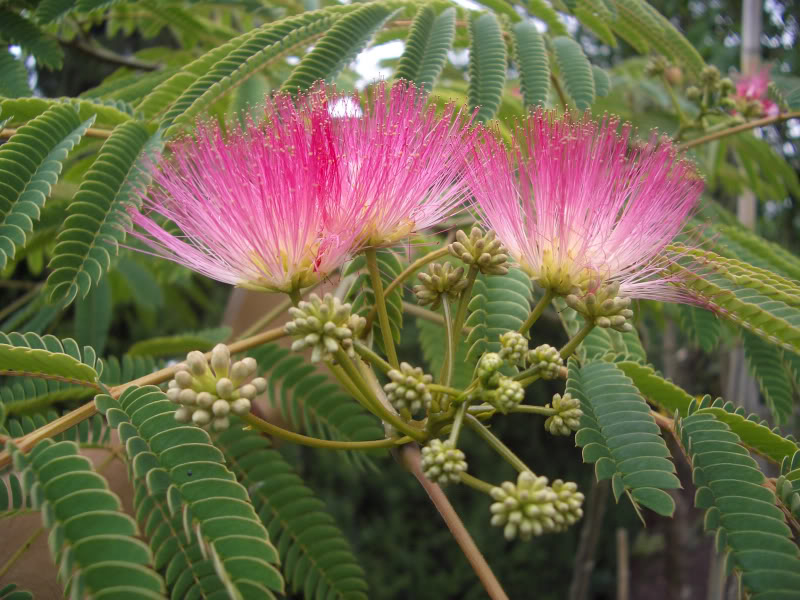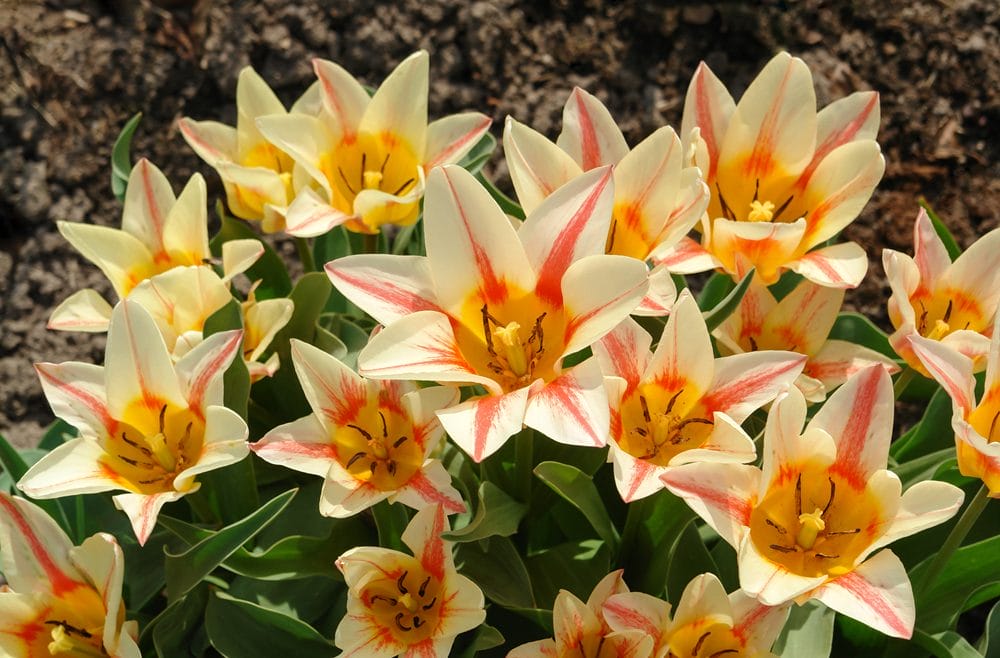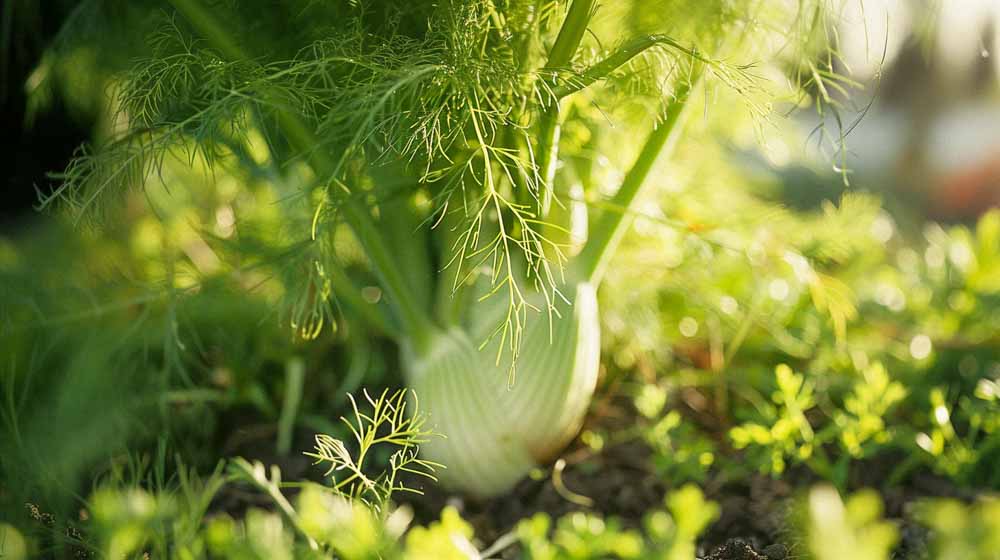
Albizia Julibrissin: En Dybdegående Guide til Silkefuruens Magi og Dyrkning
Albizia julibrissin, kjærlig kjent som silkefuru eller silkeakasia, er et fascinerende og elegant løvfellende tre som har vunnet hjertene til hageentusiaster og landskapsarkitekter over hele verden. Med sine delikate, fernlignende blader og spektakulære, rosa duskblomster, bringer dette treet en eksotisk og sofistikert sjarm til ethvert miljø. Denne omfattende guiden dykker dypt inn i alle aspekter av Albizia julibrissin, fra dens botaniske opprinnelse og unike egenskaper til detaljerte instruksjoner for dyrking, stell og bruk i hagen. Vi vil også utforske de potensielle helsefordelene og den kulturelle betydningen av dette bemerkelsesverdige treet.
Opprinnelse og Botanisk Klassifisering av Silkefuru
Albizia julibrissin tilhører erteblomstfamilien (Fabaceae), en stor og mangfoldig familie som inkluderer mange viktige nytteplanter. Slekten Albizia er oppkalt etter den italienske adelsmannen Filippo degli Albizzi, som introduserte treet til Europa på 1700-tallet. Artsnavnet «julibrissin» er avledet fra det persiske navnet «gul-i brisham,» som betyr «silkeblomst,» en treffende beskrivelse av de karakteristiske blomstene.
Silkefuru har sin naturlige utbredelse i et bredt område som strekker seg fra Iran og Aserbajdsjan i vest, gjennom Sentral-Asia og Kina, til Korea og Japan i øst. Treet trives i subtropiske og tempererte klima, og har vist seg å være overraskende tilpasningsdyktig til ulike vekstforhold. På grunn av sin skjønnhet og hardførhet har Albizia julibrissin blitt populær som prydtre i mange deler av verden, inkludert Nord- og Sør-Amerika, Australia og Sør-Europa.
Unike Botaniske Egenskaper
Albizia julibrissin er kjent for flere distinkte botaniske trekk som gjør det lett å identifisere og svært attraktivt:
Bladverk
Bladene til silkefuru er dobbeltfinnete, noe som betyr at hovedstammen deler seg i flere grener (primære pinnae), og hver av disse grenene bærer et stort antall små, avlange blader (sekundære pinnae). Dette gir treet et lett og luftig, nesten fjæraktig utseende. De enkelte bladene er vanligvis grønne, men kan ha en lett bronsefarge når de er unge. En bemerkelsesverdig egenskap ved silkefuru er at bladene folder seg sammen om natten og i perioder med tørt eller varmt vær, en mekanisme som antas å redusere vanntap og beskytte mot ekstreme forhold.
Blomster
De mest iøynefallende trekkene ved Albizia julibrissin er utvilsomt blomstene. De vises i overflod fra tidlig sommer til sensommer og består av en samling lange, silkeaktige støvbærere som gir dem et mykt og dusklignende utseende. Blomstene er vanligvis rosa, men varianter med hvite eller rødlige blomster finnes også. De er ofte lett duftende og tiltrekker seg et bredt spekter av pollinatorer, inkludert bier og sommerfugler.
Frukter og Frø
Etter blomstring utvikler silkefuru lange, flate belgfrukter som inneholder flere ovale, brune frø. Belgene modner sent på høsten og kan forbli på treet gjennom vinteren. Frøene spres vanligvis med vinden eller ved hjelp av dyr.

Vekstform og Størrelse
Albizia julibrissin har vanligvis en bred, paraplylignende krone og en relativt kort stamme. Treet vokser moderat raskt og kan nå en høyde på 5 til 12 meter, med en lignende eller større spredning. Barken er glatt og gråbrun, og utvikler etter hvert fine sprekker med alderen.
Dyrking av Silkefuru: En Steg-for-Steg Guide
Å dyrke Albizia julibrissin kan være en givende opplevelse, da treet er relativt lettstelt og tilpasser seg godt til ulike forhold. Her er en detaljert guide til hvordan du lykkes med dyrkingen av silkefuru:
Valg av Voksested
Silkefuru trives best på et solrikt sted med minst seks til åtte timer med direkte sollys per dag. Dette sikrer optimal blomstring og sunn vekst. Selv om treet kan tolerere lett skygge, kan for lite sol føre til redusert blomstring og en mer spinkel vekstform.
Når det gjelder jord, er Albizia julibrissin ganske tolerant og kan vokse i de fleste typer jord, inkludert sand, leire og loam. Det er imidlertid viktig at jorden er godt drenert for å unngå rotrot. Treet foretrekker en lett sur til nøytral pH-verdi (mellom 6,0 og 7,5).
Husk også å vurdere plassen treet vil trenge når det når sin fulle størrelse. Med sin brede krone kan silkefuru skygge for andre planter og trenger tilstrekkelig med plass for å utvikle seg fritt.
Planting av Silkefuru
Den beste tiden for å plante silkefuru er om våren eller tidlig på høsten, når jorden er varm og fuktig. Følg disse trinnene for en vellykket planting:
- Forbered plantingstedet: Grav et hull som er dobbelt så bredt og like dypt som rotklumpen til treet. Løsne jorden i bunnen av hullet for å forbedre dreneringen.
- Fjern treet fra potten: Vær forsiktig så du ikke skader røttene. Hvis røttene er viklet rundt rotklumpen, løsne dem forsiktig for å oppmuntre til utovervekst.
- Plasser treet i hullet: Sørg for at toppen av rotklumpen er i nivå med eller litt over det omkringliggende bakkenivået.
- Fyll hullet: Fyll hullet gradvis med den utgravde jorden, og trykk den lett ned rundt rotklumpen for å fjerne luftlommer.
- Vann grundig: Etter planting, vann treet rikelig for å sette jorden rundt røttene.
- Dekk med mulch: Legg et lag med organisk mulch (f.eks. barkflis eller kompost) rundt base av treet, og hold det noen centimeter unna stammen. Dette hjelper med å bevare fuktighet, undertrykke ugress og regulere jordtemperaturen.

Vanning av Silkefuru
Nyplantede silkefuru trenger regelmessig vanning de første vekstsesongene for å etablere et sterkt rotsystem. Vann dypt når de øverste par centimeterne av jorden føles tørre. Etter at treet er etablert (vanligvis etter ett til to år), er det relativt tørketolerant og trenger sjelden supplerende vanning, bortsett fra i lange perioder med tørke.
Det er viktig å unngå overvanning, da dette kan føre til rotrot. Sørg for at jorden drenerer godt og ikke blir vannlogged.
Gjødsling av Silkefuru
Silkefuru er generelt ikke en storforbruker av næringsstoffer og trenger sjelden mye gjødsel. Faktisk kan overgjødsling føre til overdreven bladvekst på bekostning av blomstringen. Hvis jorden din er veldig næringsfattig, kan du vurdere å gi en lett dose balansert gjødsel (f.eks. 10-10-10) om våren, før ny vekst starter. Følg alltid instruksjonene på gjødselpakken.
Et lag med organisk mulch rundt treet vil gradvis frigjøre næringsstoffer til jorden og bidra til en sunn vekst.
Beskjæring av Silkefuru
Beskjæring av Albizia julibrissin er vanligvis ikke nødvendig for helsen til treet, men det kan gjøres for å forme kronen, fjerne døde eller skadde grener, eller for å kontrollere størrelsen. Den beste tiden for beskjæring er sen vinter eller tidlig vår, før ny vekst starter.
Ved beskjæring, bruk skarpe og rene redskaper for å unngå å introdusere sykdommer. Fjern eventuelle kryssende eller gnagende grener for å forbedre luftsirkulasjonen og redusere risikoen for skader. Du kan også tynne ut kronen litt for å slippe inn mer lys.
Vær forsiktig med kraftig beskjæring, da dette kan stimulere kraftig ny vekst av vannskudd.

Overvintring av Silkefuru
Hardførheten til Albizia julibrissin varierer noe avhengig av kultivar og klima, men de fleste er hardføre i USDA-sonene 7 til 10. I kaldere klima kan treet lide av frostskader, spesielt når det er ungt. Her er noen tips for overvintring:
- Beskytt unge trær: Dekk base av unge trær med et tykt lag mulch for å beskytte røttene mot frost. Du kan også vikle stammen med jute eller annet isolerende materiale.
- Unngå sen gjødsling: Slutt å gjødsle treet sent på sommeren for å unngå å stimulere ny vekst som ikke vil rekke å herdes før vinteren.
- Vær oppmerksom på snø og is: Selv om silkefuru tåler lett snøfall, kan tunge snø- eller isbelastninger skade de skjøre grenene. Rist forsiktig av tung snø for å unngå brekkasje.
- Vinterbeskjæring: Sen vinter er en god tid for å fjerne eventuelle døde eller skadde grener som følge av vinterværet.
I svært kalde klima (under USDA sone 7) kan det være nødvendig å dyrke silkefuru i en stor potte som kan flyttes innendørs til et kjølig, men frostfritt sted om vinteren.
Formering av Silkefuru
Albizia julibrissin kan formeres på flere måter:

Frø
Frø er en vanlig måte å formere silkefuru på. Frøene bør skarifiseres (f.eks. ved å skrape overflaten lett med sandpapir) og bløtlegges i varmt vann i 24 timer før såing for å forbedre spiringen. Så frøene i en godt drenert såjord om våren og hold dem fuktige og varme (rundt 20-25°C). Spiring kan ta fra noen uker til flere måneder.

Stiklinger
Silkefuru kan også formeres ved hjelp av halvmodne stiklinger tatt om sommeren. Klipp ca. 10-15 cm lange stiklinger fra årets nye vekst, fjern de nederste bladene og dypp enden i rothormon. Plant stiklingene i en fuktig blanding av sand og torvmos, og dekk dem med plast for å opprettholde høy luftfuktighet. Hold dem på et varmt og lyst sted, men unngå direkte sollys. Røtter vil vanligvis utvikles innen noen uker.
Rotstiklinger
Noen kultivarer kan også formeres ved hjelp av rotstiklinger tatt om vinteren. Grav opp en del av en sunn rot, kutt den i 5-10 cm lange biter og plant dem horisontalt i fuktig sand eller såjord. Hold dem kjølig og fuktig til ny vekst vises.
Okulering og Poding
For å sikre at du får en spesifikk kultivar med ønskede egenskaper (f.eks. blomsterfarge eller vekstform), kan okulering eller poding utføres på en grunnstamme av Albizia julibrissin.
Vanlige Problemer: Sykdommer og Skadedyr
Selv om Albizia julibrissin generelt er et hardført tre, kan det være utsatt for visse sykdommer og skadedyr:
Sykdommer
- Visnesyke (Fusarium wilt): Dette er en alvorlig soppsykdom som kan føre til at blader visner og faller av, etterfulgt av at hele grener dør. Det finnes ingen kur, og infiserte trær bør fjernes for å hindre spredning. Sørg for god drenering og unngå å skade røttene for å redusere risikoen.
- Soppflekker: Ulike sopp kan forårsake flekker på bladene. Dette er sjelden alvorlig, men kan være kosmetisk skjemmende. God luftsirkulasjon og fjerning av infiserte blader kan hjelpe.
- Rotrot: Dette oppstår i dårlig drenert jord og kan føre til at røttene råtner og treet dør. Sørg for godt drenert jord og unngå overvanning.
Skadedyr
- Bladlus: Disse små insektene suger saft fra bladene og kan forårsake deformasjon og klebrig honningdugg. Spyl dem av med en kraftig vannstråle eller bruk insektssåpe.
- Spinnmidd: Disse små edderkoppdyrene kan forårsake gulning og bronsefarging av bladene, spesielt i tørt vær. Øk luftfuktigheten og bruk eventuelt et akaricid.
- Sekksyke: Larvene til disse møllene bygger beskyttende sekker rundt seg og spiser på bladene. Plukk av sekkene for hånd eller bruk et insektmiddel som inneholder Bacillus thuringiensis (Bt).
- Mimosasilkeorm (Webworm): Disse larvene spinner silkenett i grenene og spiser på bladene, noe som kan føre til betydelig avløving. Fjern nettene og larvene for hånd eller bruk et passende insektmiddel.
Reg





